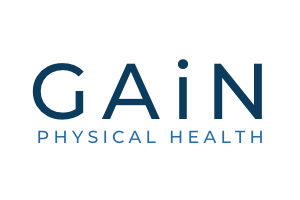Low Back Pain
Lumbar Disc Herniation
Lumbar Disc Herniations are commonly referred to as a “Slipped Disc”, this term however is technically incorrect as the disc can not actually slip out of place.
In the centre of a lumbar disc sits the nucleus pulpous, a gelatinous type material. Surrounding it lies the annulus fibrosis which are layers of collagen fibres. Lumbar Disc Herniation refers to the movement of the nucleus populous through the laters annulus fibrosis.
There are many different types of disc herniations, here are 3 examples:

What does it feel like?
Disc herniations can be extremely painful and worrying, however it’s important to note that the majority of disc herniations have excellent outcomes within 3-6 months. As discussed in our Blog post ‘Lumbar Disc Herniation Re-absorption’, lumbar disc herniations are capable of being reabsorbed by the body.
Symptoms can vary depending on the direction of the disc prolapse and research has shown that disc herniations can present…
- With both leg pain and/or weakness and back pain
- With back pain and not leg pain
- With leg pain and/or weakness but not back pain
- Without any symptoms (commonly seen in MRIs of people who do not have back pain)
People with acute lumbar disc herniations describe acute low back pain that can be severe in nature and is typically worse with sitting and bending motions.
It is common with acute disc herniations to have a protective scoliosis; often the person will stand with their lower back side bent away from the pain. This is commonly mistaken for the spine being out of place, but it is a natural response from the body to take pressure off the irritated tissue.
How can it start?
Typically occurs after a relatively benign moment such as bending forward to pick something up from the floor.
It can also occur during a heavy lift such as a squat or deadlift.
What aggravates the symptoms?
- Bending
- Lifting
- Sitting and driving
- Activities that increase intra-abdominal pressure such as sneezing, coughing and passing a bowel movement
When the nerve is affected, it can be difficult to extend the knee and extend the leg and thigh up when laying on your back (movements that stretch the hamstrings also affect the sciatic nerve)
What are other associated factors?
Frequently the onset is preceded by a change of activity where the lower back is being used more for bending activities e.g:
- An increase in gardening for the preceding week
- A sudden increase in training volume of an activity that requires increased lumbar spine flexion motion such as rowing or squats.
Here’s how Osteopathic Therapy can help:
We Investigate:
- We will ask questions about your general health and symptoms, this helps us to rule out serious underlying conditions or sequelae such as Cauda Equina Syndrome
- We perform tests of the lumbar spine: orthopaedic tests, range of motion tests
- Tests of the sciatic and femoral nerves: sensation, reflexes, power and neurodynamics
- We look for provoking and relieving movements and postures, this helps form the basis of our treatment plan and home advice.
We Diagnose:
We will diagnose your condition and rule out other causes of your symptoms
We Treat:
Treatment modalities will include Osteopathic Therapy such as joint articulation, soft tissue therapy and progressive exercise.
As Osteopathic Therapists we are very familiar and with this condition so we are able to provide reassurance based upon extensive training and experience.
And finally, we will provide Exercise & Lifestyle Advice:
We will give advice on daily movements and resting positions that can be used for pain relief and what to avoid and what to do more of to aid your recovery.

Click here to read further information about our Low Back Pain Program
